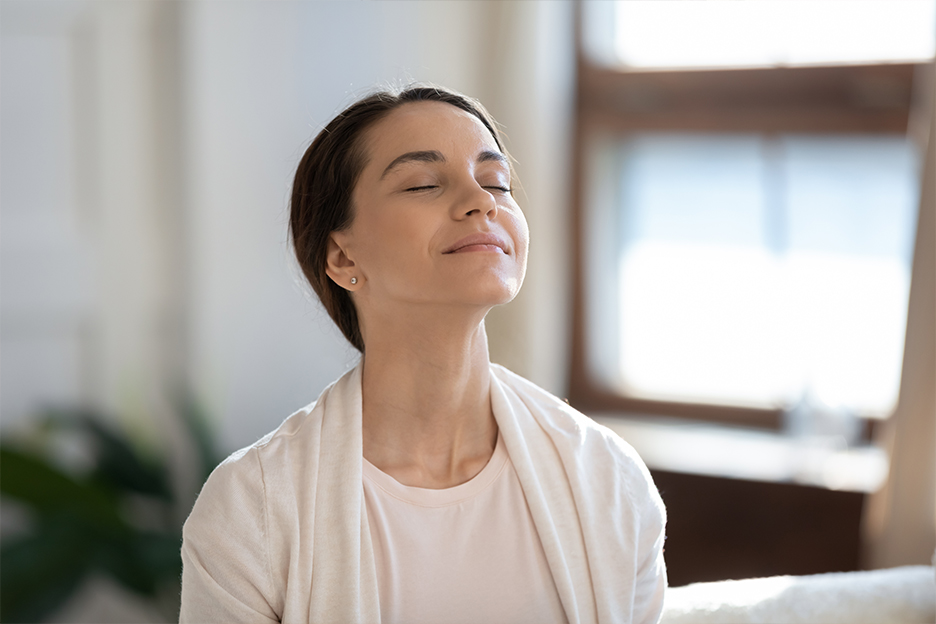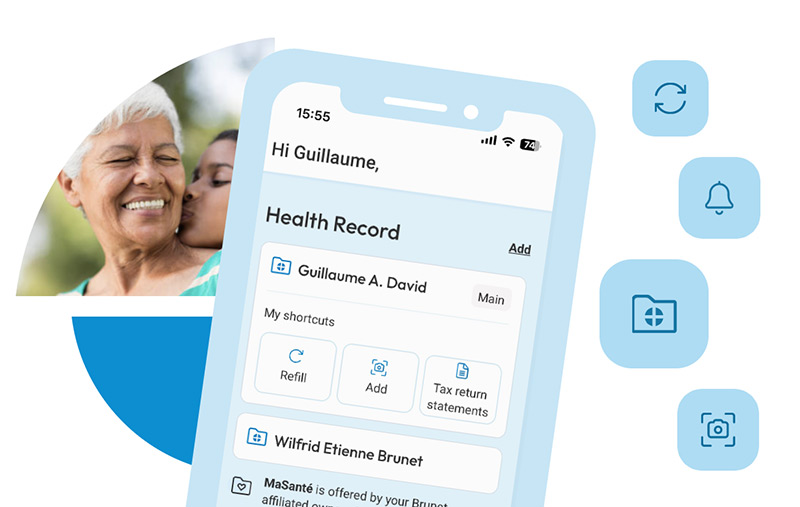Many people look forward to winter and the skiing, ice skating, and snowball fights that come with it. However, many others are less enthusiastic. As the days grow shorter, they start to feel demoralized or even depressed. Read on to learn what causes the winter blues and what you can do about them.

Winter means less light
Do you feel down or depressed during the winter months? Lack of sunlight could be the issue. Between the clocks turning back in November and the days growing shorter, it’s already dark out by late afternoon. For many, the reduced daylight hours in wintertime can cause a dip in energy and mood. Nearly 15% of Canadians say they have experienced mild symptoms of seasonal affective disorder in their lifetime, while 2% to 3% suffer from severe symptoms.1
Why does light affect mood?
Light actually helps regulate our biological rhythms. Specifically, it impacts bodily functions such as sleep and hormone secretion, which follow specific rhythms based on the time of day. That means a lack of light can disrupt our brain chemistry, which in turn can lead to sleep disorders and other problems. Depressive symptoms are also a common side effect of this disruption.
What is light therapy?
Light therapy is a non-drug treatment used to counter the effects of light deprivation. More specifically, it involves indirectly exposing your eyes to light of a similar intensity and spectrum to sunlight.
What are the benefits of light therapy?
Light therapy is used to treat depression, the effects of jet lag, and sleep disorders such as insomnia. Among other things, it affects serotonin (the “happiness hormone”), which helps regulate our mood and circadian rhythm. You may see an improvement as early as the first week of treatment, but optimal results take around four weeks to appear.
What should you look for in a light therapy lamp?
What kind of bulb do you need?
It’s important to consider what technology a light therapy lamp uses. Though there are many different types of devices on the market, LED lamps are considered the most practical. They don’t need to be placed too close or too far away to be effective, and they have a good lifespan. In addition, LEDs do not emit UV or infrared rays, which are harmful to the skin and eyes. This makes them the safest option.
How many lux do you need?
First of all, keep in mind that light intensity will impact the length of your light therapy sessions. The more powerful the lamp, the shorter the required exposure time.
It’s recommended to use a lamp with a minimum intensity of 2,000 lux. However, according to clinical standards, 10,000 lux is preferable. At this level, you would reap the same benefits with a shorter exposure.
What is a lux?
The lux is a unit used to measure the illumination of an object or a place. A well-lit office, for example, will clock in at 300 to 500 lux, while a sunny day can reach 100,000 lux.
How long should light therapy sessions last?
The optimal duration of light therapy depends on the intensity of the light box. For a device that emits 10,000 lux, the ideal exposure time is 30 minutes a day. That total should be adjusted proportionally to the light box’s lux rating. For example, the ideal exposure time when using a 5,000-lux light box is 1 hour.
For best results, you should begin light therapy in early fall and stop in spring, when there’s more natural light. Aim to steadily taper your sessions before stopping completely.
How do I use a light box?
Light therapy is best done in the morning. Place the light box 30 to 40 cm in front of you, and keep your eyes open without looking directly at the light. You can read, eat, or work at the same time.
Does light therapy have any side effects?
In rare cases, light therapy can have side effects. Some people may experience temporary headaches, nausea, or eye strain after a session. If these symptoms occur, try sitting farther away from the light box. Gradually bring it closer to you from session to session, until it’s at the optimal distance of 30 cm.
What are the contraindications to light therapy?
Health professionals agree that this treatment is not recommended for people with ophthalmological disorders such as retinopathy, glaucoma, or cataracts, or for anyone taking photosensitizing medication. If in doubt, ask your pharmacist about whether the medications you’re taking are compatible with light therapy. They will also be able to suggest other solutions available at the pharmacy to relieve symptoms of seasonal affective disorder.
Other articles that might interest you
Seasonal depression: causes, symptoms and treatments
5 questions to demystify depression
Depression: an illness that can be treated
The baby blues and post-partum depression
4 tips to ease into the time change
Last updated on January 23, 2025

Renew and pay wherever you want, whenever you want
Keep your health at your fingertips: manage your prescriptions and those of your loved ones with the Brunet MaSanté app. Discover it here!
